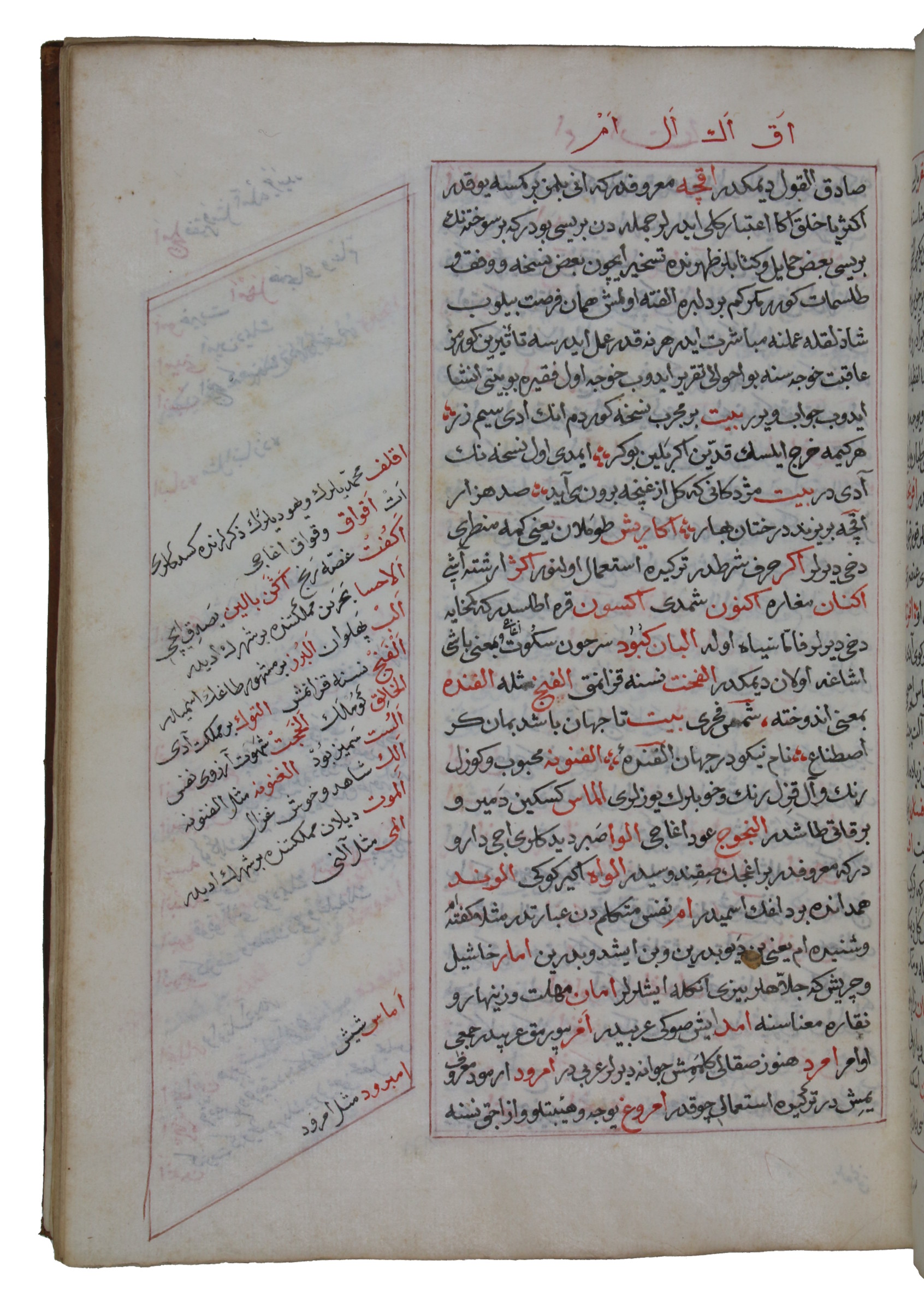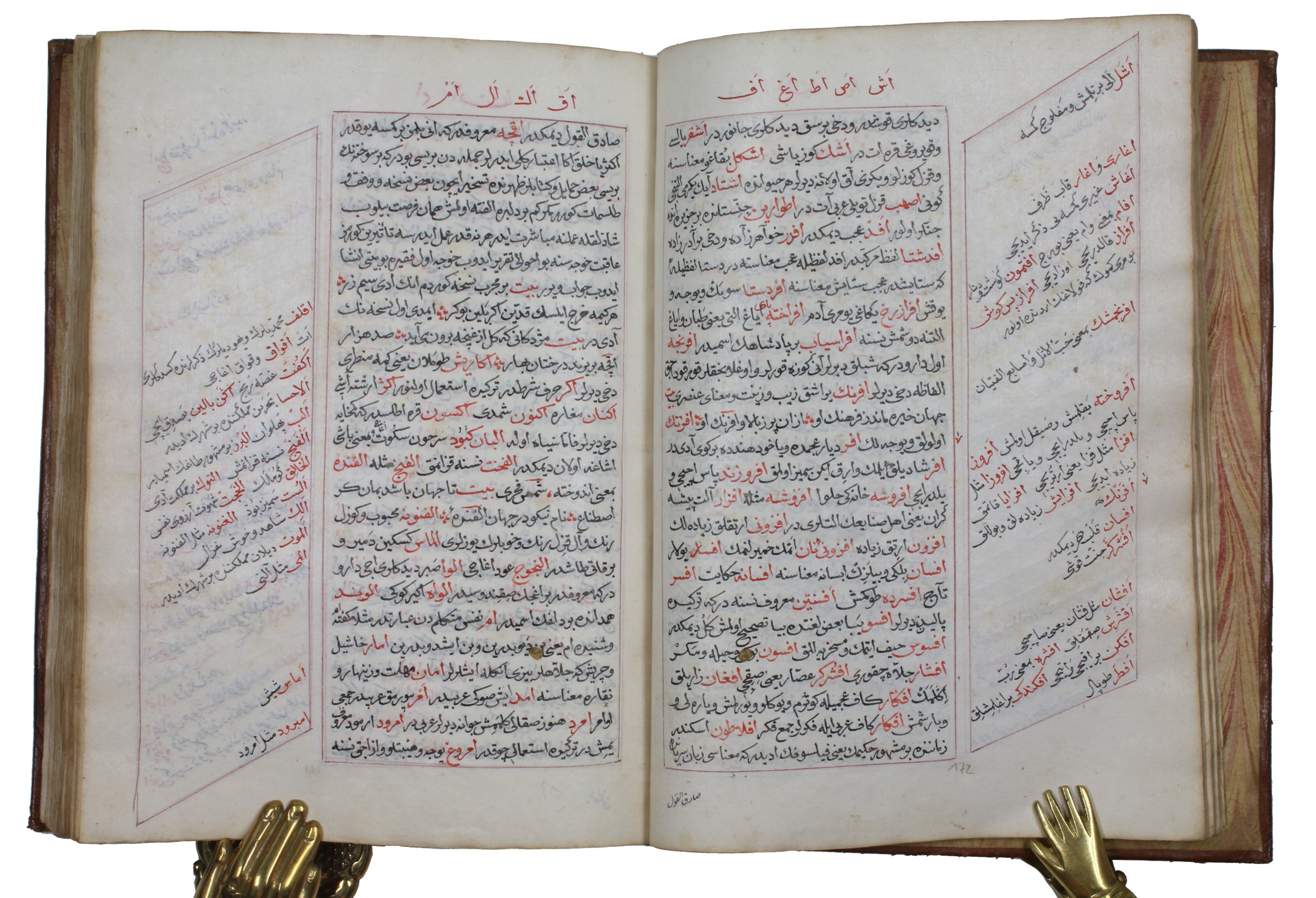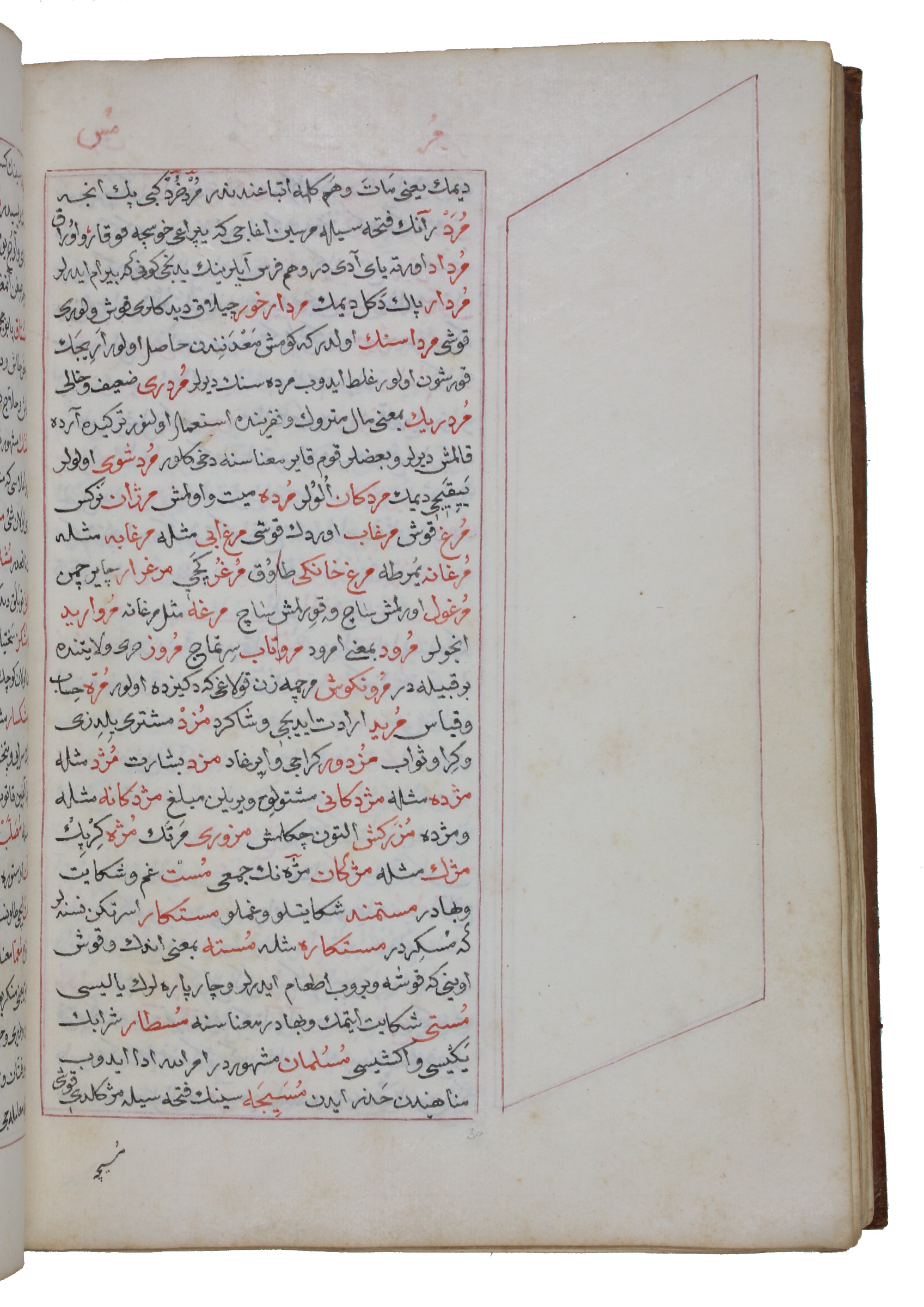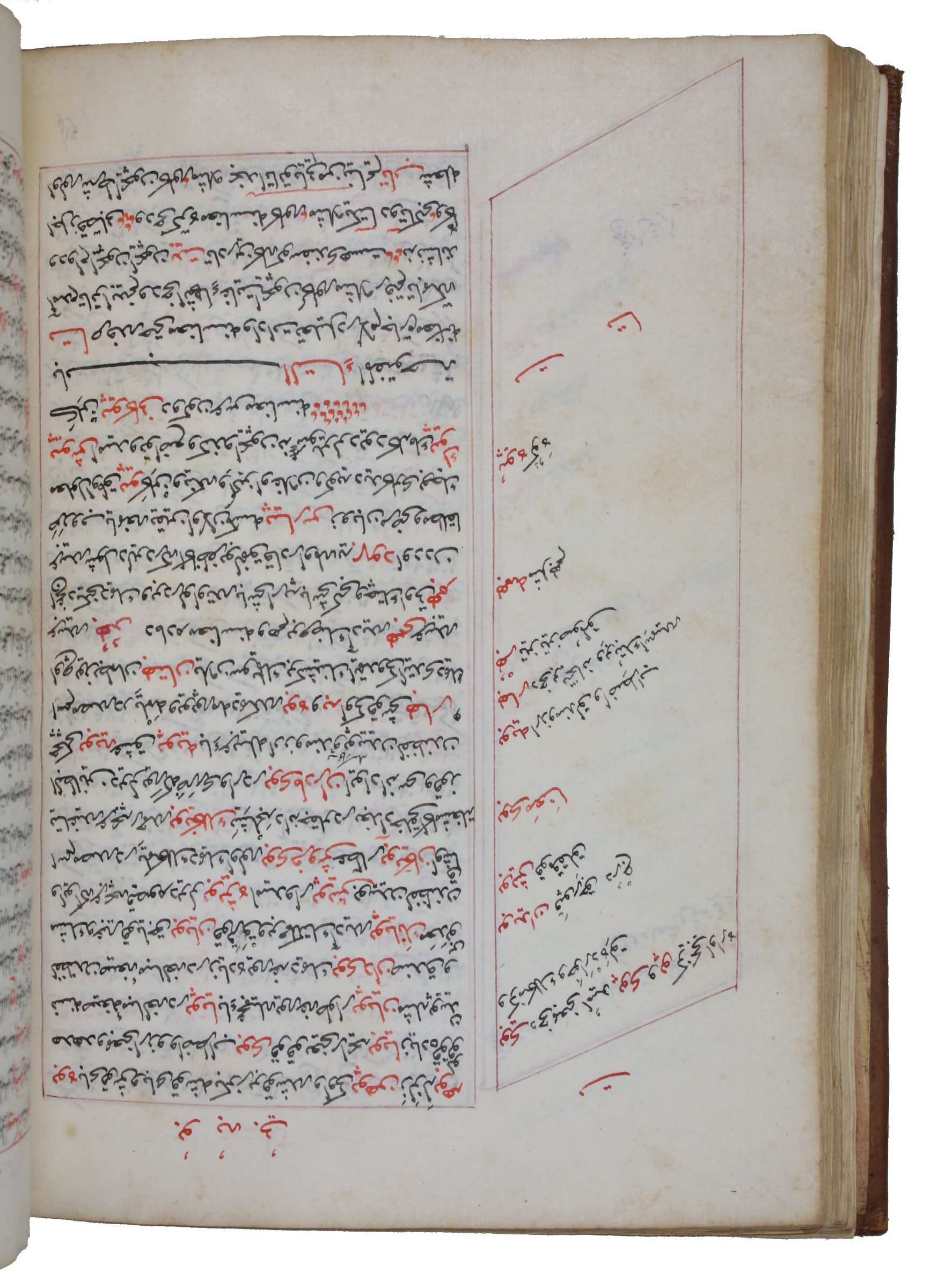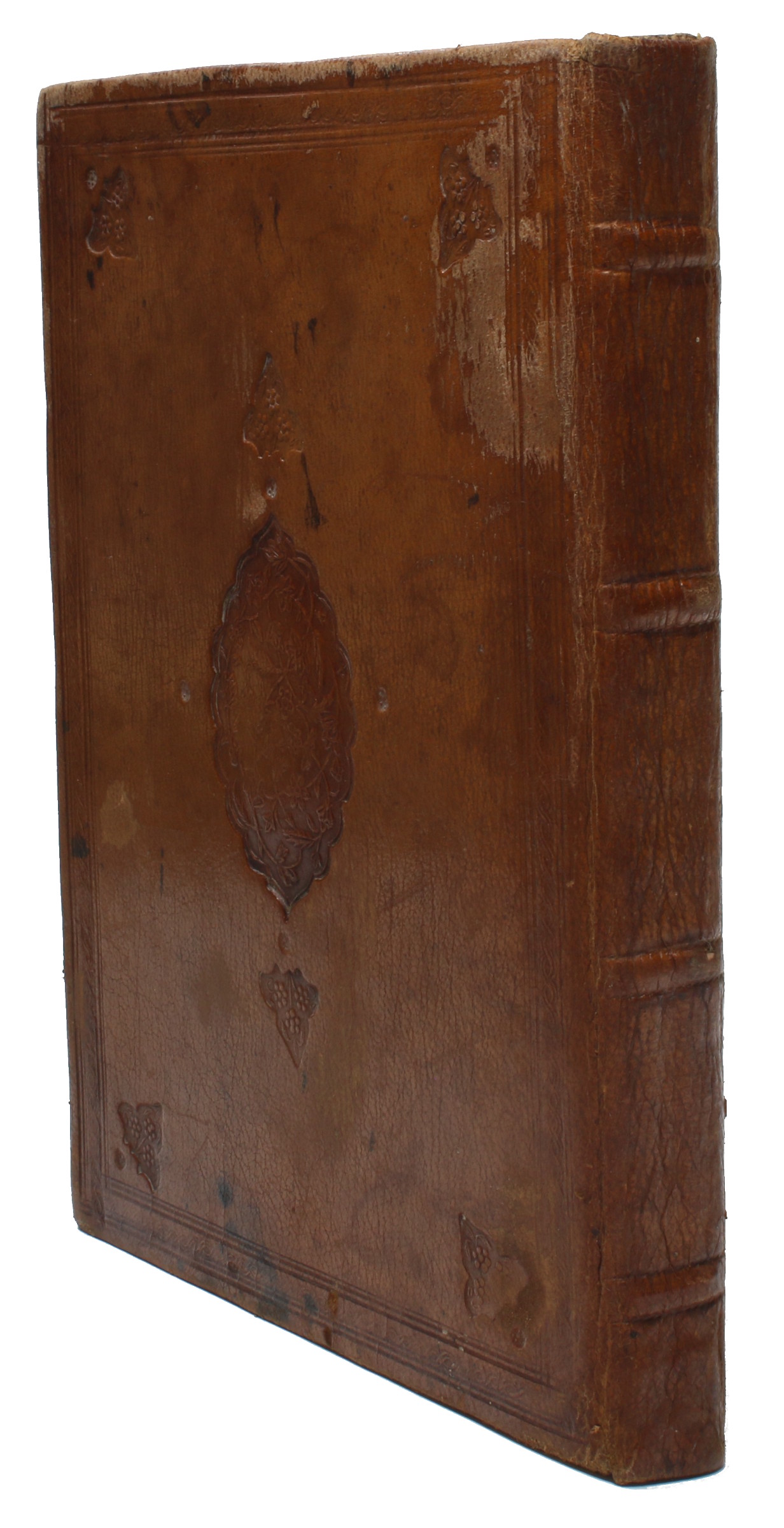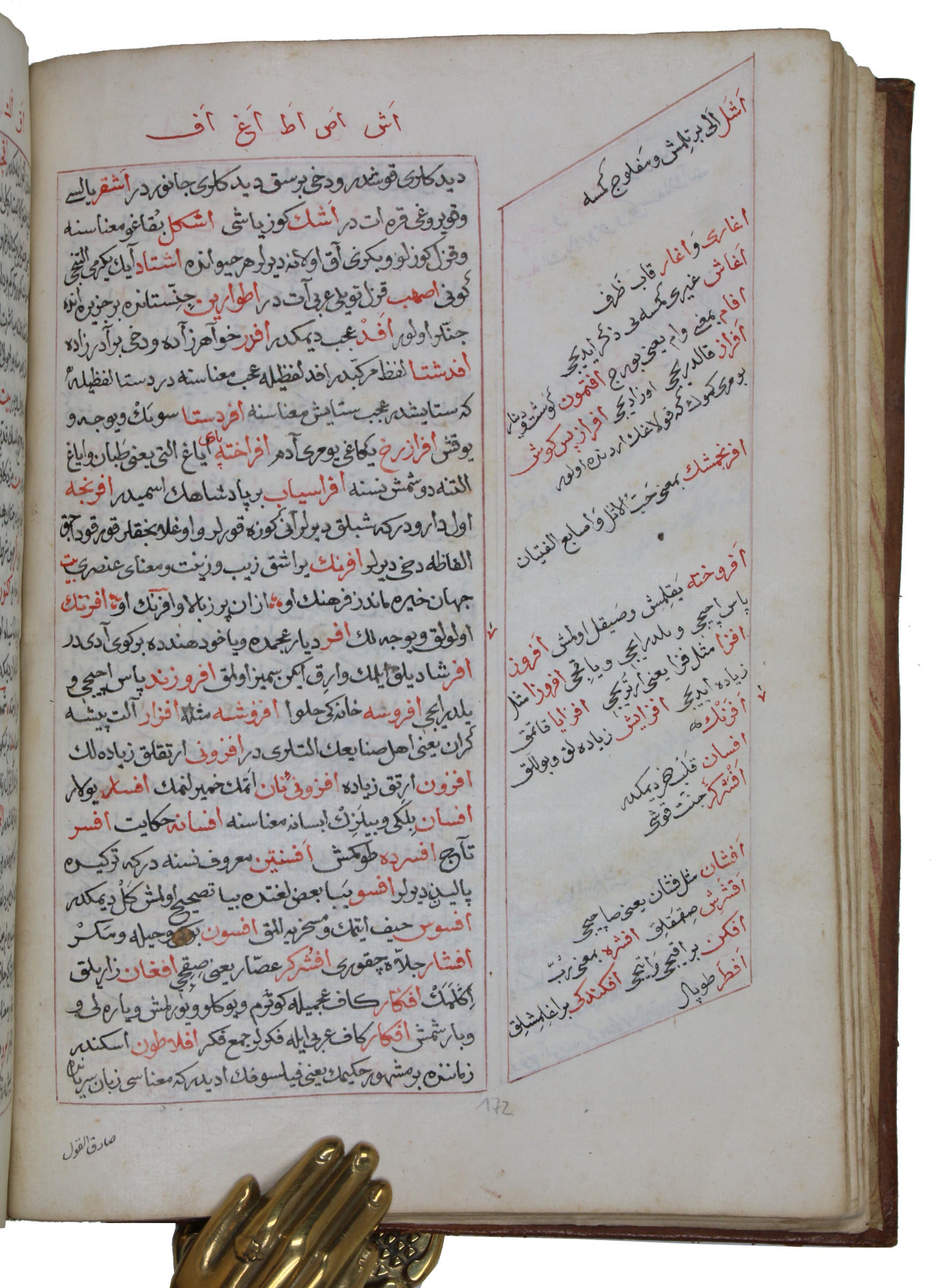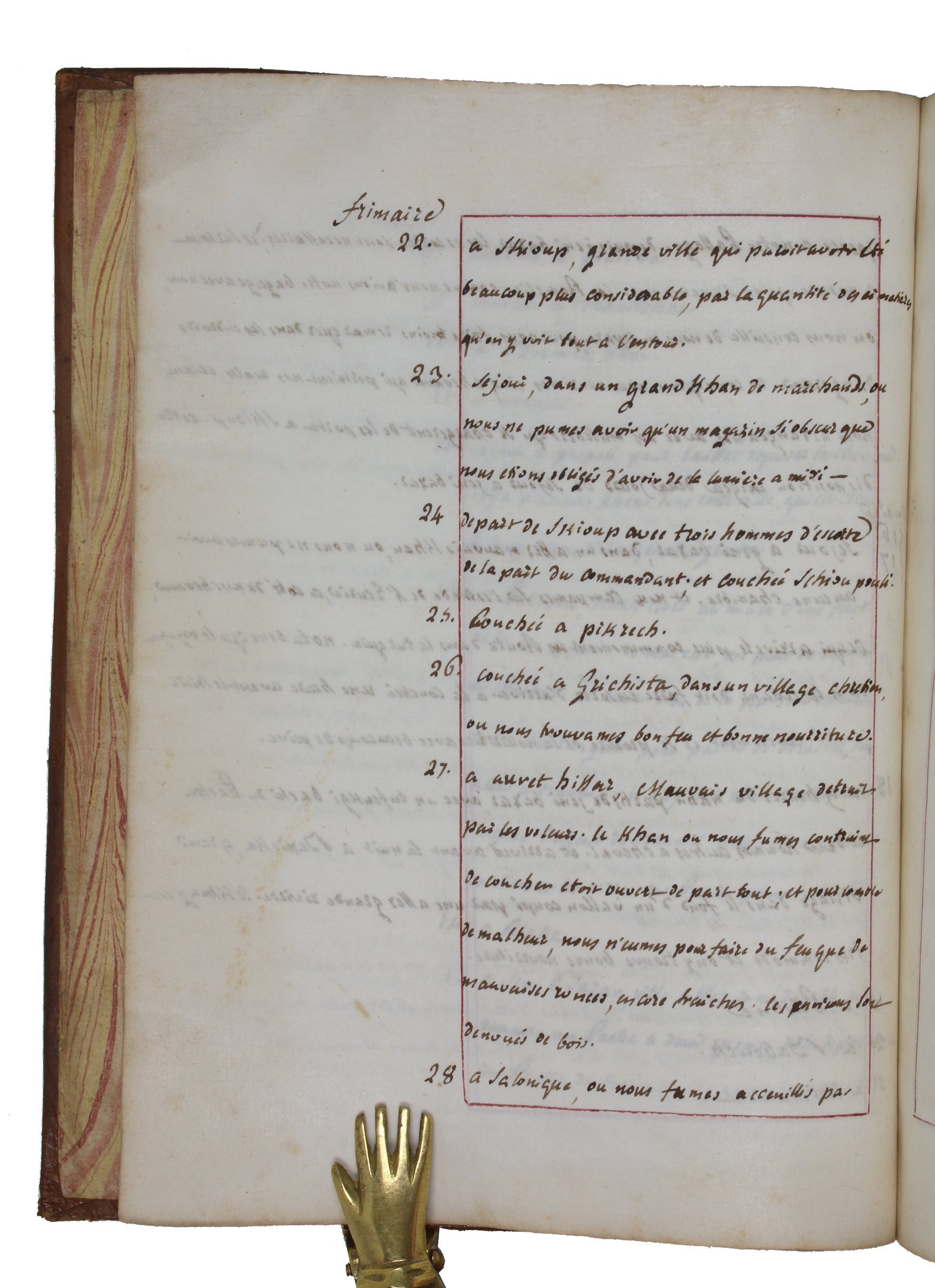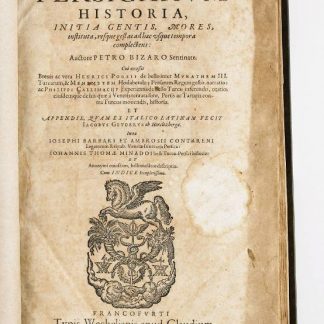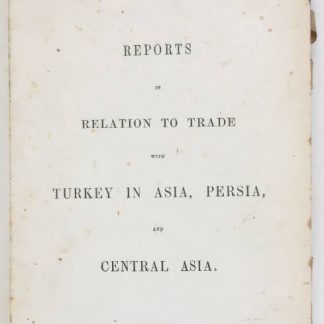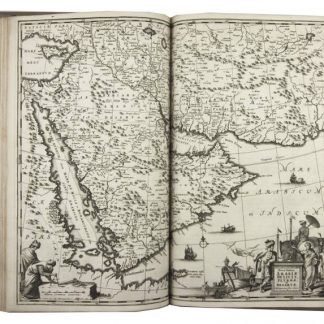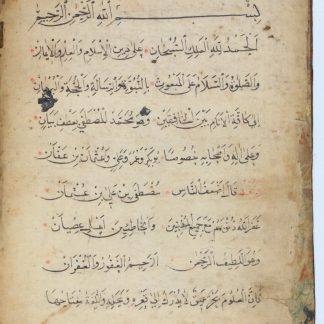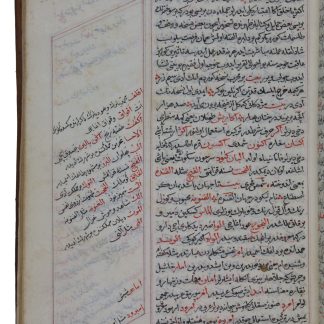French revolutionaries selling crown jewels for African wheat in the Levant
Lugat-i Nimetullah. [With:] Voyage de Venise a Constantinople des citoyens Perrin, Cablat et Venture.
4to (175 x 225 mm). 202 ff., the first 193 ff. being a Turkish-Persian dictionary, and the remaining leaves with a French travelogue in a second hand. Persian, Ottoman Turkish, and French manuscript on paper. Black and red naskh script ruled in red, French in India ink. Contemporary full calf ruled in blind with blindstamped medallions.
€ 14.000,00
A mid-18th century manuscript copy of a standard Turkish-Persian dictionary, produced (as the colophon notes) in "Cairo, for the French", and used by a party of French travellers on a political-commercial mission for Revolutionary France.
The otherwise blank final leaves of this Persian-Ottoman Turkish dictionary feature the nine-page travel diary of a "Voyage de Venise a Constantinople des citoyens Perrin, Cablat et Venture", detailing a journey from Venice to Istanbul via the Levant in 1793-94 by a mercantile expedition of Frenchmen tasked with feeding the Revolution. The group was formed around two merchants and a translator sent by the Committee for Public Safety to achieve a specific goal: to sell the recently seized crown jewels in the Levant, and use the resulting funds to import wheat for the starving French Republic. The two merchants were Pierre Augustin Perrin and Jean François Cablat, and the translator was Jean-Michel Venture de Paradis (1739-99), who worked at the French embassy in Constantinople and as an interpreter and translator across North Africa. The manuscript dictionary may well have been owned by de Venture himself as part of his translation work.
The travel diary does not describe the work of selling diamonds and pearls, but it does name each place visited, several run-ins with illness, difficulties in procuring horses or mules, and notes on cities which and khans whom the author particularly liked (or particularly did not like). Upon reaching Saloniki and then Istanbul itself, the author also names the important European political actors encountered, including the half-brother of the famous revolutionary Georges Danton (1759-94); Jean-Georges Recordain, French ambassador to Venice; François Joseph Michel Noël; a Genoese merchant named Rossi; and a Dubrovnik-born tradesman referred to as "M. Christich" (i.e., Kristic), based at Salinoniki. Furthering the international connections, a note added to the end of the text states that "Notre M. de Vergennes" had been appointed "Envoyé extraordinaire" to the Sublime Porte in January 1755: this refers to Charles Gravier, comte de Vergennes (1719-87), who was Envoy to the Ottoman Empire from 1755 to 1768, and perhaps important personally or politically to the author.
Arising from a mix of language, politics, revolution, jewel-selling, and personal encounters, this is a particularly interesting copy of "Lugat-i Nimetullah", the dictionary originally penned by Nimatullah bin Ahmad bin Mubarak al-Rumi (d. 1561).
Light exterior wear, text clear and legible.

